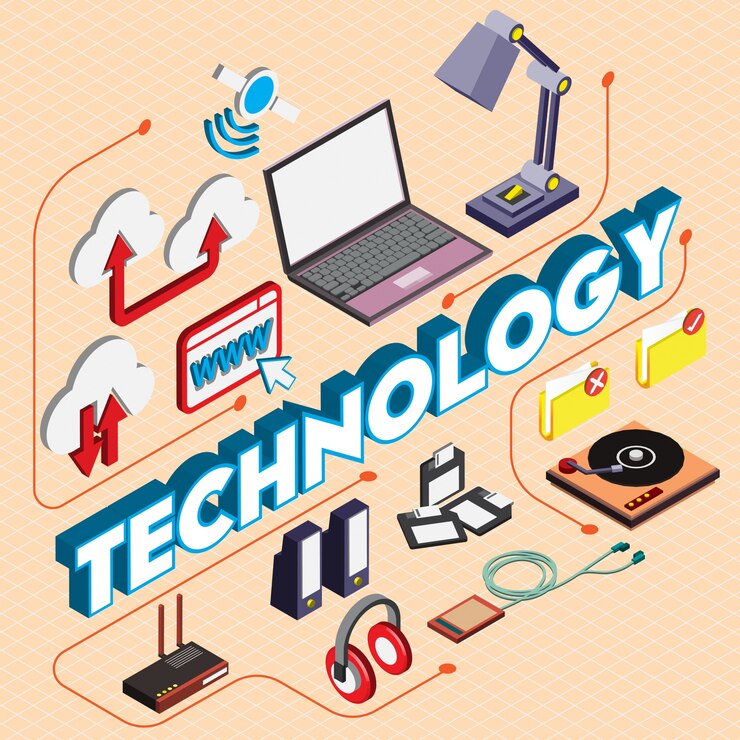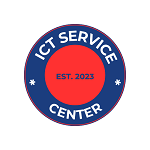The 3 main areas of ICT are hardware, software, and telecommunications. These areas encompass the physical components, digital programs, and communication networks essential to information and communication technology.
ICT is a crucial aspect of modern society, enabling the seamless flow of information, efficient business operations, and global connectivity. The hardware encompasses the tangible physical components, such as computers, servers, and network devices. Software refers to the digital programs and applications that run on the hardware, facilitating diverse tasks from data management to complex computations.
Telecommunications involve the various modes of communication and network infrastructure, including internet and mobile technologies, essential for data transmission and connectivity. Understanding the significance of these three main areas is fundamental to navigating the digital landscape and harnessing the potential of ICT for personal and professional endeavors.
Defining ICT
ICT, which stands for Information and Communication Technology, refers to the utilization of technology to manage and process information. It encompasses a diverse range of technologies that empower individuals and organizations to communicate, access, store, and manipulate information effectively.
ICT Explained
ICT involves the convergence of various technologies, including computers, telecommunications, and multimedia. It encompasses both the hardware and software required for processing and conveying information. Additionally, ICT also encompasses the internet, wireless networks, and other communication mediums that facilitate the exchange of data.
Importance Of ICT
The significance of ICT in today’s world cannot be overstated. It plays a pivotal role in enhancing efficiency, productivity, and communication in both personal and professional contexts. ICT empowers individuals to access a wealth of information, collaborate seamlessly, and harness the power of digital tools to solve complex problems.
Evolution Of ICT
ICT has undergone a remarkable evolution over the years, transitioning from basic computing and communication devices to the sophisticated and interconnected technological landscape we witness today. This evolution has revolutionized the way information is accessed, processed, and transmitted, paving the way for unparalleled advancements in various industries and domains.
The Main Areas

ICT, short for Information and Communications Technology, is a broad field that encompasses various aspects of technology and communication. When it comes to ICT, the main areas can be categorized into three distinctive segments: Hardware, Software, and Networks. Each of these areas plays a vital role in enabling the functioning and connectivity of technology in the digital world.
Hardware
Hardware refers to the physical components of a computer or any other electronic system. These components include central processing units (CPUs), monitors, keyboards, printers, and other peripheral devices. The hardware is essential for the functioning of any ICT system and forms the foundation on which software and networks operate.
Software
Software encompasses the programs, applications, and operating systems that enable users to perform various tasks with their hardware. It includes system software that controls the basic functions of a computer, such as an operating system, as well as application software that serves specific purposes, such as word processing, graphic design, or database management.
Networks
Networks are the infrastructure that facilitates communication and data exchange between different devices and systems. This includes both the physical components, such as cables and routers, as well as the logical components, like protocols and software used for communication. Networks can be local, such as a home or office network, or global, such as the internet.
Hardware In ICT
Hardware in ICT plays a crucial role in enabling the functioning of various technological systems and devices. It encompasses the physical components used to process, store, and display data within the realm of Information and Communication Technology (ICT). This section will delve into the definition and vital role of hardware, the different types of hardware, and the latest technological advancements in this field.
Definition And Role
In ICT, hardware refers to the physical components, machinery, and equipment used to carry out computing functions. This includes devices such as computers, servers, routers, and other equipment required for data storage, processing, and communication. The role of hardware is to facilitate the execution of software programs and applications, enabling the manipulation and communication of data within ICT systems. Essentially, hardware serves as the foundation for the functionality and operation of ICT devices and networks.
Types Of Hardware
There are several types of hardware utilized within ICT, each serving specific functions:
- Input Devices: These include keyboards, mice, scanners, and other tools used to input data into a computer system.
- Output Devices: Monitors, printers, and speakers fall under this category, as they are used to display and provide output from digital information.
- Storage Devices: Hard drives, solid-state drives, and optical drives are used for data storage, ensuring information is retrievable as needed.
- Processing Units: Central Processing Units (CPUs) serve as the core processing components within computers, carrying out instructions and calculations.
- Networking Devices: Routers, switches, and modems are essential for establishing and maintaining network connections within ICT systems.
Latest Technological Advancements
Advancements in hardware technology continue to drive innovation and progress within the ICT field. Some of the latest developments include:
- Quantum Computing: Offering potential for exponential processing power, quantum computing has emerged as a groundbreaking technology with the capacity to revolutionize data processing and analysis.
- Internet of Things (IoT) Devices: The proliferation of interconnected devices and sensors has led to the development of advanced hardware capable of facilitating seamless communication and data exchange within IoT ecosystems.
- Artificial Intelligence (AI) Hardware: Specialized hardware optimized for AI and machine learning applications, such as graphics processing units (GPUs), accelerators, and neural processing units, are enabling the rapid advancement of AI technologies.
Software In ICT
Software is a crucial element of ICT, playing a pivotal role in the functioning of various technological systems. Understanding the significance of software, different types, and the role of operating systems is essential in grasping the breadth of software in ICT.
Significance Of Software
Software in ICT is important as it facilitates the operation and management of hardware, enabling the execution of tasks such as data processing, communication, and system control. It serves as the bridge between hardware components and users, providing the necessary interface for interaction and utilization of technology.
Different Types Of Software
Software in ICT encompasses various types, including application software, system software, and programming software. Application software fulfills specific user tasks such as word processing and data management. System software manages and supports the computer system, while programming software aids in software development and programming tasks.
Role Of Operating Systems
The operating system plays a crucial role in managing hardware and software resources, providing essential services for computer programs. It facilitates communication between hardware and software, manages memory and files, and provides a user interface for interaction with the system.
Networks In ICT
Networks in Information and Communication Technology (ICT) play a crucial role in connecting devices, enabling communication, and facilitating the exchange of information and resources. There are three main areas in ICT, and networks are one of them. Understanding the types of networks, network security, and the future of networking is essential for businesses and individuals who rely on technology for their day-to-day operations.
Types Of Networks
Networks in ICT can be categorized into several types, each serving different purposes and operating at varying scales:
- Local Area Network (LAN)
- Wide Area Network (WAN)
- Wireless Networks
- Metropolitan Area Network (MAN)
- Virtual Private Network (VPN)
- Cloud-based Networks
Network Security
Network security involves implementing measures to protect networks from unauthorized access, breaches, and cyber threats. Some essential aspects of network security include:
- Firewalls and Intrusion Detection Systems
- Encryption Protocols
- Access Controls and Authentication Mechanisms
- Regular Security Audits and Updates
The Future Of Networking
Looking ahead, the future of networking in ICT is marked by technological advancements and innovations that promise to revolutionize the way networks operate:
- 5G Technology – Offering faster and more reliable connectivity
- Internet of Things (IoT) – Interconnecting devices and enabling seamless communication
- Software-Defined Networking – Enhancing network flexibility and management
- Edge Computing – Distributing data processing and reducing latency

Credit: eca.unwomen.org
Frequently Asked Questions :
What Are The 3 Main Areas Of ICT ?
ICT encompasses telecommunications, software development, and multimedia. Telecommunications involves transmitting data. Software development includes coding and programming. Multimedia involves creating and manipulating visual and audio content. These areas are essential in the digital era for communication, information sharing, and technology development.
Why Is Telecommunications Important In ICT ?
Telecommunications allows for data exchange through various means like phones and the internet. It plays a crucial role in enabling global connectivity, facilitating virtual meetings, and supporting real-time information transfer. In ICT, telecommunications forms the foundation for various digital technologies, including mobile communication, broadband, and networking systems.
How Does Software Development Contribute To ICT ?
Software development is integral to ICT as it involves creating, designing, and maintaining computer programs and applications. It enables the functionality of devices and the execution of complex tasks. Additionally, software development drives technological innovation and enhances user experiences across various digital platforms, thus shaping the digital landscape.
Conclusion
The three main areas of ICT – hardware, software, and networking – play crucial roles in our digital world. Understanding these areas can help individuals, businesses, and organizations to leverage technology effectively. By staying informed about advancements in these areas, one can stay ahead in the rapidly evolving digital landscape.

